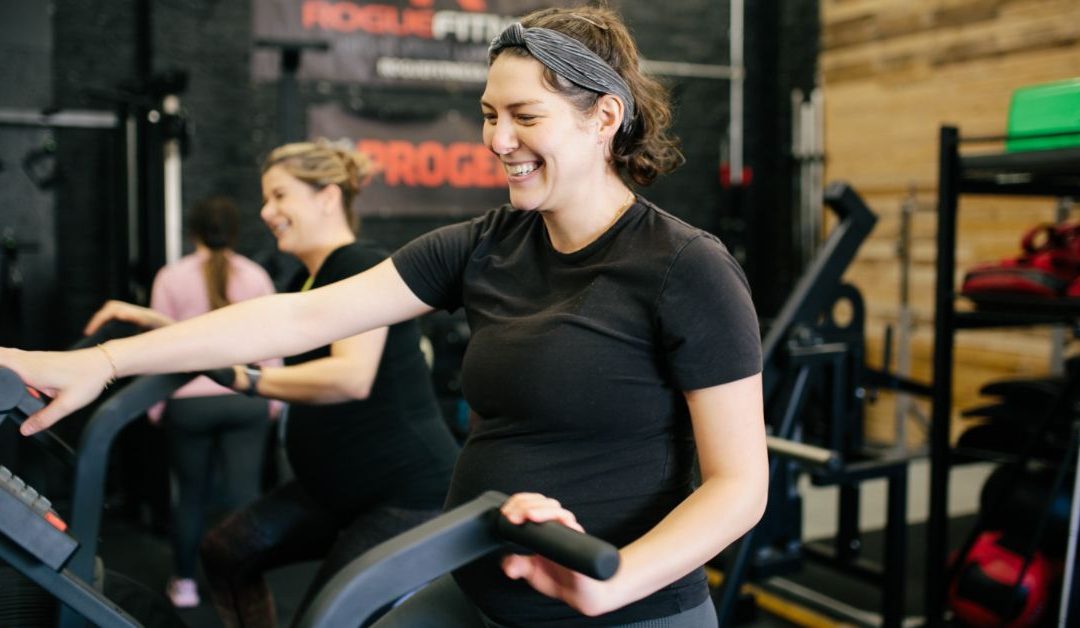In the seven years that I’ve been coaching pregnancy exercise, women almost always arrive at class feeling a bit confused, nervous or even anxious about exercise in pregnancy. What exercises am I allowed to do? What should I avoid? Will I be putting my baby at risk?
First of all, listen to your healthcare provider. Your GP or midwife, or consultant if you have one, must be happy for you to exercise. If she advises you to avoid certain activities, do what you are told. If you’re advised to take it easy, ask exactly what they mean – is walking all right? If you lift weights and you’re advised not to lift heavy, what do they consider ‘heavy’? No fitness instructor should advise you to go against your healthcare professional.
Next up, here’s the other big rule – don’t bump the bump. In every pregnancy, you would be wise to eliminate all activities which may result in trauma to the bump. I’m thinking of rugby, abseiling, water skiing, windsurfing, tightrope walking – I’m sorry if that’s your regular weekend line-up, but you need to avoid any trauma to the bump!
In a straightforward pregnancy where your healthcare provider has given you no reason why you should not exercise, you should remember that your baby is safe and secure in the womb. Exercise does not cause miscarriage or development problems. In fact, there are many benefits to exercising during pregnancy, as this illustration from the British Medical Journal shows:
Maternal and fetal benefits of exercise during pregnancy. Based on Bø et al., 2016; 2017; Silva et al., 2017; Haakstad et al., 2018. Green bobbles indicate moderate to high evidence, yellow bobbles indicate presumed benefits/low evidence.
Image source: British Medical Journal blog
Other things to remember when you exercise include:
For any exercises where you’d normally lie on your back, consider elevating your boobs above your bump – think a bolster under your mid back or shoulders. Lying on your back can sometimes restrict blood flow after 18 weeks of pregnancy. You’ll know it’s happening if you feel dizzy and light headed, so don’t panic, simply roll on to your side.
Don’t hold your breath. Baby requires an uninterrupted flow of oxygen. So if you lift heavy weights or swim, make sure you don’t use techniques that involve breath holding.
After these have been eliminated the question becomes not “what can I do in pregnancy?” but “what should I do in pregnancy?”
Mobility: Keeping your body moving well will mean you can stay mobile for as many of your 40 pregnant weeks as possible. While issues such as pelvic pain may need advice from a Women’s Health Physiotherapist, many complaints such as backache, tight shoulders, shins or thighs can be lessened or avoided by keeping moving.
Alignment: as we get heavier in the front of the body we need to train upper and lower back to maintain good alignment. This means choosing exercises to strengthen the backs of your legs (hamstrings) as well as your entire back. Think rowing and pulling exercises for this.
Pelvic floor also needs to be strengthened as someone is growing on it, causing it to strengthen and weaken. At the same time it’s really important to be able to relax and let go of pelvic floor tension, so separately downtraining the pelvic floor muscles is essential.
Strength: why do you want to be strong when you’re pregnant? Firstly, to maximise your choices for labour and delivery – you may want to maintain a birthing position for a good while, and the stronger you are, the more able you’ll be to do this. Secondly, because when you’re a mum, there’s a lot of lifting, carrying, pushing, pulling and squatting required. Being strong can really help you with these.
Core: Like your pelvic floor, your abdominal muscles are being stretched and weakened as your baby and your tummy grow. Finding ways to offset this challenge, by safely activating your core muscles will help you face motherhood a bit stronger. For most women, the six-pack muscle (rectus abdominus) will separate (think two three-packs instead of one six-pack) as the connective tissue in between stretches to accommodate the baby. This is natural and normal and usually returns to its normal state after birth, but it’s best to avoid making it worse. Any exercises or movements that result in ‘doming’ – where there’s a bit of a protrusion in the middle of your tummy – are best avoided, and these usually include planks, crunches and sit-ups.
Eat: Training in a fasted state isn’t a great idea for most women, but it’s a terrible idea if you’re pregnant! Make sure you fuel your workouts by eating something with carbohydrates in it before your session, and refuelling with carbs and protien afterwards.
After your workout, pay attention to how your body feels. Do you have any:
- New aches and pains?
- Excessive soreness?
- Exhaustion?
- Heaviness or dragging in your pelvic floor?
- Pelvic pain?
Hopefully none of these apply – you should feel energised and happy after your workout! But if you do experience any of these, don’t press on regardless – make modifications and work out smarter next time.
If all of this sounds like a lot of balls to juggle – especially while you’re feeling the effects of hormone change on your brain, you might consider letting me do the thinking for you! My Pregnancy Power-Up® gym sessions put all of these considerations into one handy class. You can book sessions from this website, and if you’ve got questions you can book a Clarity Call first. It would be great to work with you!



